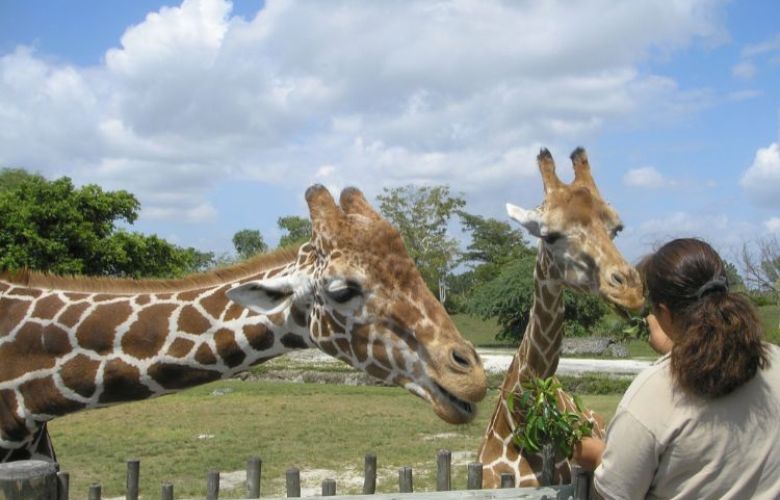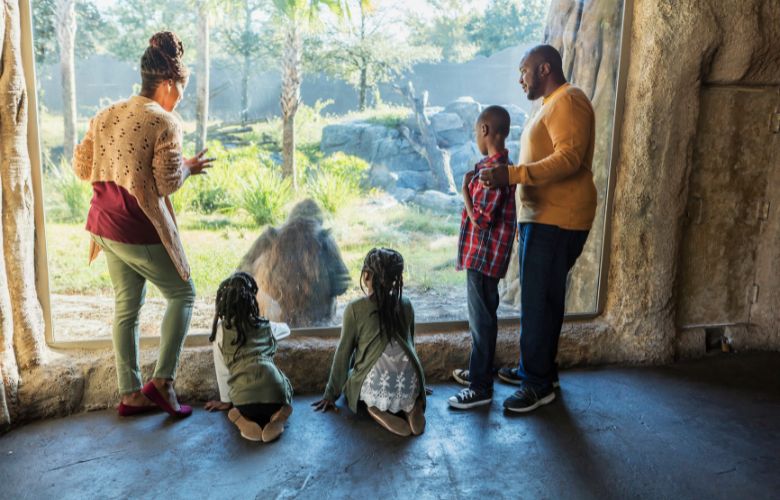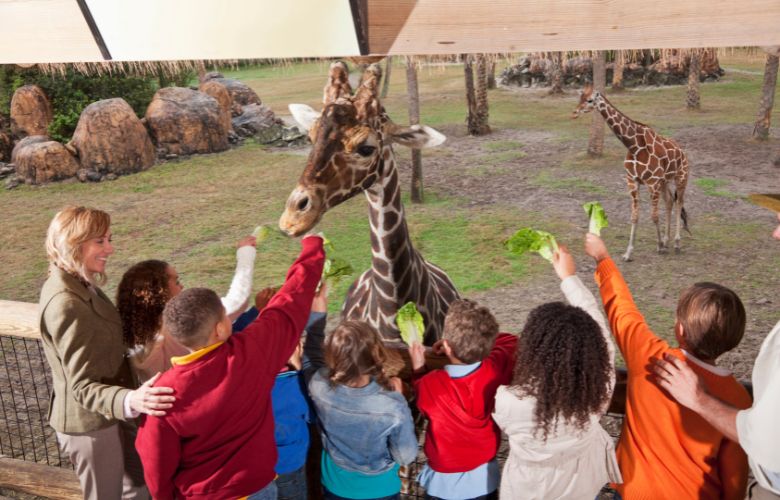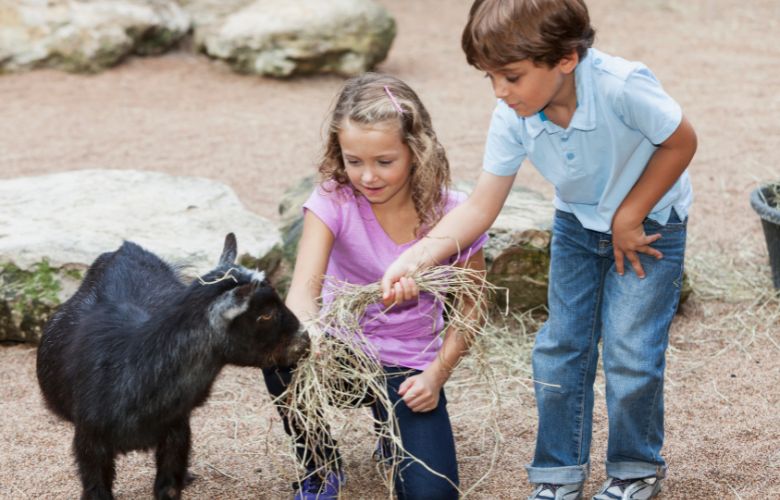Looking to explore the wild animals of Melbourne? Then why not visit one of the amazing zoos in the city? At a zoo, you can witness different types of wildlife – both native to the region and from other parts of the world. You’ll also get up close with these animals when viewing them in their habitats, such as deserts, rainforests, and savannahs. Some zoos, too, provide educational programs that teach children about animal conservation and their natural habitats. So why not plan a trip to a local zoo today? With the help of a guide, it’s the perfect way to learn more about these majestic creatures!
Why Should You Visit the Zoo?

Visiting the zoo can provide you with a fun and educational outing for the entire family! It gives you a chance to observe wild animals in their natural habitat and learn more about them. Kids especially benefit from zoo trips as they encourage them to learn about animals, their habitats and their behaviours. Furthermore, going on a zoo visit offers great entertainment value and provides lasting memories that will stay with you for years!
Animal Lovers: If you are an animal lover, visiting a zoo is a great way to explore and learn about different species of animals. Zoos are a great place to share your love for animals with family or friends and make the experience more meaningful. Zoos provide educational opportunities for visitors, allowing them to gain important knowledge about wildlife. Additionally, zoos make it easier for people to get closer to exotic animals that otherwise may never be encountered in their lifetime.
Develop Empathy Towards Animals: Visiting the zoo can be an invaluable experience for children and adults alike, as it provides a unique opportunity to observe and learn more about animals that cannot be seen in the wild. It allows visitors to develop an empathetic understanding of these creatures and their needs, as well as gain insights into conservation efforts and human impacts on the environment. A trip to the zoo offers fun, educational, and experiential activities that both children and adults will enjoy!
Environmental Awareness: Visiting a zoo can be an eye-opening experience that fosters a true appreciation of the environment and its inhabitants. A trip to the zoo heightens your awareness of different species of animals as well as their habitat requirements. The conservation efforts being done by zoos are also informative and inspiring, and you can gain a greater understanding and responsibility for preserving our planet’s delicate ecosystem balance.
Animal Touching Experiences: The zoo not only provides a unique opportunity to observe animals from different parts of the world, but it also offers a chance to get close and have an up-close experience with them. Animal touching experiences available in some zoos can help enhance your knowledge about animals while providing multiple physical and mental health benefits. Studies have linked these experiences to reduced stress and anxiety levels, improved interpersonal interactions, better moods, lower aggression, increased empathy and trustworthiness, as well as enhanced cardiovascular health. On top of all this, animal interaction has even been found to aid in pain management!
Educational Resource: Zoos provide a unique opportunity for kids to experience and learn about wild animals up close. From interpretive tours to educational presentations and feeding expos, zoos offer visitors the chance to not only view the animals but also understand their habits and behaviours. These experiences can help children become more aware of their place in our natural world, as well as how they can help protect species through conservation.
Social Cause: A visit to the zoo is a great way to support social causes. Your donations and entry fee can help fund essential conservation efforts, research programs and invaluable veterinary care, as well as necessary breeding initiatives to prevent extinction. Recent studies have shown that people care deeply about animal welfare, so it’s important that any signs of animal suffering or abuse are not seen by visitors. Visiting the zoo can be a fun learning experience as well; seeing animals engaged in active, natural behaviours is always exciting! The more community support zoos receive, the better they will be able to achieve their goals of conservation and animal welfare.
How to Plan Your Zoo Visit Day?

A trip to the zoo with your family (especially kids) can be entertaining and educational, but if you are not prepared, it will not fulfil your level of excitement to the fullest. You have to do some research on the best times to visit the zoo, plan your itinerary, and involve your kids as much as you can in the decision-making process before embarking on your zoo safari. Making the most of your time and money while also ensuring that everyone has a memorable trip is possible with planning.
Create an Itinerary: Planning a zoo visit can be exciting and even a bit overwhelming. To make the most of your day out, start by taking the time to research the attractions offered at the location you plan to visit. Check out their website for information on park hours, ticket prices, and special events that may happen during your visits, such as animal feedings or demonstrations. Next, work with the children in your party to decide which animals they want to see, listing each one ahead of time so you know where to go once you are there. Don’t forget to also make note of any interesting exhibits, activities or shows available throughout the day. Finally, put it all together into an itinerary that you have discussed and planned out with everyone in advance. With careful planning and preparation for your zoo trip, you’ll have a memorable and educational experience!
Carry Things You Prefer: Planning a successful zoo visit requires some forethought, especially if you’re bringing little ones with you! Before setting out, consider what items will make your visit the most enjoyable. Pack necessary items such as water bottles, snacks, and sunscreen if it’s sunny; an umbrella or raincoat if it’s expected to rain; and don’t forget diapers, toys, extra clothes and a stroller for young children. Ensure that everyone has plenty of energy to explore the zoo by having all essential items ready ahead of time.
Make Your Zoo Visit Budget-Friendly: Getting there as early as possible and bringing your food is key; this will allow you to make the most of your ticket price, avoid long lines at popular exhibits, and save money from not eating out. If you’re planning on doing this often, it might be worth investing in a zoo membership, as these are typically cheaper than individual tickets for each visit. You also might get a discount if your zoo offers mutual memberships with another local attraction, such as an aquarium.
Experiences You Can’t Afford To Miss

Visiting the zoo is a must-have experience that no one should miss. Not only are there exciting kid-friendly attractions and educational experiences, but zoos have also placed a strong emphasis on conservation and scientific research. Animals have their own space; their habitats are recreated as accurately as possible to best replicate the wild, and you can often get closer than ever before to too many species; such animals might otherwise never get a chance to see them in person. Here are just some of the fabulous experiences you’ll get at the zoo:
Taking a journey around the zoo, you’ll have the opportunity to appreciate the immense diversity of the animal kingdom. Observing these creatures in their natural environment can help increase understanding of animal welfare, bringing about positive learning results and support for conservation efforts. Furthermore, it leads to pleasurable emotions, an emotional connection between people and animals, and empathic reactions.
At the zoo, you’ll receive a guide from the administration that provides information on the various animal species inhabiting the establishment and their stories. In addition, the zoo makes sure to have plenty of security for both visitors and furry occupants.
As a wildlife explorer, you will have the opportunity to explore nature and observe the wildlife explorers’ base camp at the zoo before its opening hours. You can take part in fascinating activities such as birdwatching, tracking animals and collecting data for scientific research!
If you’re bringing kids along to the zoo, look for areas specifically geared towards them. Here, they’ll be able to make friends with some of the more approachable creatures, like goats, sheep, birds, sloths and turtles. Beyond keeping them occupied with up-close animal interactions, visiting these areas provides children with the opportunity to learn more about each species and also how zoos are helping save endangered species around the world.
You can check the guidelines or get permission from the staff members before clicking the pictures to get the memory of a close-up encounter with the animals that are exclusive to this experience.
Zoos are often spread over vast areas, making it difficult to explore on foot. This is why many zoos offer a special cart service to make the visit easier and more enjoyable. During your guided tour of the zoo, you will have the chance to relax in your expedition cart while an experienced and knowledgeable guide provides fascinating facts about the plants and animals that are all around. You can also get out of the cart whenever you like so that you can take a closer look at some of your favourite animals and capture stunning photographs.
Common Zoo Etiquette You Must Know

Going to the zoo is about more than simply getting up close to intriguing animals; it’s also about showing respect for them, the settings in which they live, and other people who share your interests. In order to make sure that everyone has a pleasant and educational experience, good zoo etiquette must be followed. Here is a detailed explanation of how to behave politely and respectably while visiting the zoo:
1. Respect Animals: Remembering that you are a guest in the animals’ home is one of the fundamental guidelines for visiting a zoo. The zoo personnel are responsible for giving the captive animals food, shelter, and care.
- Avoid Banging on Glass or Making Loud Noises: Avoid tapping on glass or making loud noises around animals because these actions might easily stress or terrify them. Screaming, bashing on railings, or tapping on glass doors should all be completely prohibited. Such behaviours can disturb other guests in addition to agitating the animals.
- Adhere to the Zoo’s Rules: Zoos have established guidelines for interacting with the animals. These guidelines are intended to protect both animal’s and guests’ health and safety. Always follow the zoo’s rules for approaching, feeding, and stroking animals.
- Keep a Safe Distance: Even animals in enclosures have the potential to become violent if provoked. Always keep a safe distance, particularly when among huge predators. Use the viewing platforms that are available; never try to reach out to the animals.
2. Follow the Marked Paths: Pathways in zoos are clearly marked for a reason. Leaving these trails can put your safety at risk and damage delicate ecosystems and wildlife habitats. To make sure you don’t stray:
- Obey Signage: Pay close attention to the signs directing you in the right direction. You and the animals are both protected by these signs.
- Designated Viewing Places: Zoos frequently offer set-aside viewing places for every exhibit. Use these spots to get the best views while being mindful of inclosures and obstructions.
- Don’t Climb Railings or Fences: Reaching out to animals, standing on fences, or climbing railings is risky and may cause both you and the animal injury.
3. Properly Dispose of Trash: To keep the zoo a secure and enjoyable place for everyone, cleanliness is crucial. To enhance the health of the zoo and its residents:
- Use the Provided Trash Cans: To dispose of your trash, including used drink cups, food wrappers, and other debris, use trash cans. Animals, as well as the environment, can suffer from littering.
- When Feasible Recycle: Many zoos offer recycling bins next to trash cans. Make an effort to segregate recyclables from normal trash to lessen your influence on the environment.
4. Pay Attention to Other Visitors: Going to the zoo frequently includes navigating crowded spaces and engaging in social interaction. To make sure that everyone has a good time:
- Avoid Blocking Walkways: Don’t obstruct walkways and invade other people’s personal space by being mindful of your surroundings. Move aside to make room for other guests to pass.
- Consider Your Use of Indoor Viewing Areas: In indoor exhibits with constrained space, allow others to observe the animals and exhibits.
- Keep Noise Levels Reasonable: It’s normal to be energetic and excited, but be aware of the noise you make. Excessive loudness can stress animals and ruin the experience as a whole.
Tips to Know Before Visitin

Zoos are also great places to see unique animals. Some of the animals that you might see at a zoo include gorillas, elephants, and lions. There are many different things to do and see at the zoo. It also offers a lot of opportunities to see animals up close. You can go on walks through the zoo, see the animals in their cages, or even watch them perform shows. There is usually something for everyone to enjoy at a zoo.
You can watch as animals interact in their natural habitats and learn about their natural diets, social hierarchies, and mating rituals. If you have children, they will love learning about the animals from an early age and being able to show them around the zoo on their next family outings. You can explore the animals, go on rides, or watch shows. It will be an exciting and fun tour to visit Melbourne’s nearby zoos.
- Plan And Choose The Right Zoo: Before you plan your trip to the zoo, take some time to do your research. Look for a reputable zoo with the animals you want to see, because not all zoos are alike in terms of offerings and facilities. This is an important step to ensure that you have a great day out and that your expectations are not disappointing.
- Facilities: If you are planning a visit to the zoo, it is important to double-check the facilities before you go. Determine if there’s accessible parking, restrooms, carts and guides, ATMs, snack points, and other amenities that could enhance your experience. Knowing what’s available in advance can help make sure your trip to the zoo is as enjoyable and comfortable as possible.
- Visit At The Right Time: Try to visit on a weekday as it will be less crowded, allowing for a more intimate experience with the animals. Early morning is also the best time to visit when the animals are most active and energetic. Make sure to get there early so you can fully enjoy your entry fee!
- Carry Some Snacks And Drinks: Make sure to bring some snacks and drinks with you when going to the zoo, since it can be quite a tiring and lengthy experience! This will help ensure that you don’t get tired too quickly or spend extra money on food and drinks offered at the various restaurants within the zoo. Having snacks and drinks handy can also save your time and energy on those hot days!
- Take Time: You don’t have to take the whole tour of the zoo quickly; just take your time exploring the area and observing the animals. Consider observing the animal’s behaviour in addition to simply finding it in the exhibit. Check the animal’s natural history on Google right away if they are sleeping or non-active. Cover all the spots that are available inside the premises of the zoo.
- Enjoy Your Visit: A trip to the zoo offers a wonderful opportunity to spend some amazing time with your family and friends. Also, it gives the opportunity to witness some amazing animals and gain knowledge about their habitats.
Final Words
In addition to being polite, adhering to proper zoo etiquette is essential for the welfare of animals, guests’ safety, and the preservation of the natural environment. You can make your trip to the zoo enjoyable and educational for everyone by treating the animals with respect, following the zoo’s rules, staying on designated paths, disposing of trash responsibly, and being considerate of other visitors.


